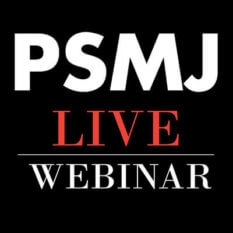 You know the symptoms of declining performance – unhappy employees and clients, reduced revenue, increased or unexpected expenses, etc.
You know the symptoms of declining performance – unhappy employees and clients, reduced revenue, increased or unexpected expenses, etc.
By only treating symptoms, the root cause or underlying issue is not resolved. Treating an unhappy client to a sporting event or providing them with pro bono work will not address the deadlines that are continually missed, the unexpected bills for extra work that was completed, or longer response times to phone calls and emails. Ignoring an unhappy employee because “he or she is having a bad day” will not improve the employee experience, the poor decisions of a supervisor, or the toxic coworker. Revenue will not be increased by hiring someone to lead Business Development efforts if the wrong person is selected, there is a negative impression of the company in the marketplace, or the company does not have the capability to execute new projects. Increased or unexpected expenses are only temporarily reduced by implementing a spending freeze and will not fix the poor internal communication, the increased labor from scope creep, nor the higher unemployment expenses from the increased level of turnover.
Drawing parallels to the Medical and Legal industries
Symptoms are an indication that something is not right, and it is easy to make a quick assumption about what is going on and how to treat it or to just dismiss it hoping it will go away on its own. This is the very reason we have hospitals. They are ready to react to a life-threatening emergency that happens unexpectedly or as a result of a poor decision. The same can be said for having an attorney on standby to help with a client or employee issue. In both of these scenarios, professionals are reacting to emergencies that are very disruptive. Wellness programs and policies are a proactive way to help minimize the unexpected or emergency situations from happening. So why not treat workforce performance the same way?
Workforce Performance
Performance reviews have ineffective for far too long, because the conversation is either focused on weaknesses or difficult feedback is not shared appropriately. This leads to frustration, confusion, reduced morale and sometimes hostility in the work place. All this distracts from a company being able to out-perform competitors. So how does a company move forward with a tangled web of dysfunction?
It starts at the top. Does the company have a clear vision for the future? Has a strategy been defined for taking the company there? Have you defined the ideal client and/or projects you will pursue that align with the skills of your workforce? Is there a plan in place to connect the vision and strategy to the daily tasks of the front line? Do employees know what is expected of them, and do they have the resources/tools to perform at their best? These are not uncommon questions, but do you have someone in your company helping to pull this all together and break down the silos? Do you have someone or a team leading the charge who has demonstrated the ability to help teams execute plans?
Maybe you are unsure, and if so then don’t miss my August 23 PSMJ webinar, Performance Management: Results Driver or Firm Failure where we will take a deeper dive into these very challenges that exist in many organizations.

About the Author: Kristi Weierbach, Ph.D, SPHR, SHRM-SCP, FPC, is Director of Workforce Advisory at Stambaugh Ness. Kristi focuses her extensive expertise on helping clients create a unique human resources architecture, applying practical solutions that complement strategic goals and company culture.

Recognizing the symptoms of an under-performing team is easy – it’s linked to reduced profitability, conflicting personalities, longer lead times, unhappy customers, the list goes on and on. However, fixing the problem is where things become a little more complex. Occasionally we may celebrate when there is stand out performance that leads to desired outcomes, but it takes more than a pat on the back to shift the tide. Join Stambaugh Ness Director of Workforce Advisory Kristi Weierbach, as she takes attendees on a deep dive to assess the performance of their teams and how to cultivate a workforce that drives results.
Performance Management: Results Driver or Firm Failure?
Thursday, August 23rd, 2018, 2:00 EDT - 3:00 EDT

You can also meet Stambaugh Ness at THRIVE 2018. They are a sponsor and exhibitor at PSMJ's annual conference to held October 22-24 in San Diego. THRIVE 2018 is your chance to learn, to network, and to get an eye-opening perspective on what the world’s most successful A/E/C firms are doing right now to thrive. This unique annual conference attracts senior-level executives from a wide range of A/E/C organizations located around the world.




